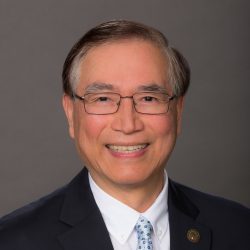
Min K Shin

Hyeran H Jeon

Chun-Hsi Chung

Dana T Graves
 Min K Shin |  Hyeran H Jeon |  Chun-Hsi Chung |  Dana T Graves |
Shin, Min K1, Jeon, Hyeran H1, Yang, Chia-Ying1, Wang, Jingyi1, Patel, Juhin H1, Chung, Chun-Hsi1, Graves, Dana T2
Faculty / Advisor: Jeon, Hyeran H1
1University of Pennsylvania School of Dental Medicine, Department of Orthodontics
2University of Pennsylvania School of Dental Medicine, Department of Periodontics
The purpose of this study is to investigate the role of NF- κB in osteoblast lineage cells and periodontal ligament (PDL) fibroblasts during the orthodontic tooth movement (OTM). NF- κB is a main regulator of the inflammatory process and plays a crucial role in inducing osteoclastogenesis and inhibiting osteogenesis. While previous studies have provided much insight into the role of NF- κB in periodontitis model, its role in mechanical force-induced bone remodeling still remains unknown.
MethodsWe examined the transgenic 2.3kb Col1α1.IKKDN mice (TG) that expressed a dominant negative mutant of inhibitor of κB kinase in osteoblast lineage cells and PDL fibroblasts and matched wild-type mice (WT). A NiTi coil delivering 10-12g of force was placed in both TG and WT mice between the right 1st molar and incisors to mesially displace the 1st molar (12-13 weeks old). The orthodontic appliance was maintained for 5 or 12 days (n=8 per each group). The contralateral unloaded sides served as the control. We measured the OTM distance, PDL width, and bone volume fraction using microCT. Osteoclast numbers were also counted using TRAP-stained sections. Activation of NF- κB was assessed by nuclear localization of p65, and the expression of receptor activator of nuclear factor-kB ligand (RANKL) was measured on the compression side by immunofluorescence stain and compared to the controls with no orthodontic force. Statistical analysis between WT and TG mice was performed using 2-tailed Student’s t test and difference among multiple groups was established by ANOVA with Scheffe’s post-hoc test (p<0.05).
ResultsOTM induced NF- κB activation (p65 nuclear localization) on the compression side in WT mice; however, it was largely blocked in TG mice. OTM was significantly decreased in the TG mice compared with WT mice along with reduced osteoclastogenesis, narrower PDL width, higher bone volume fraction and reduced RANKL expression.
ConclusionWe demonstrated for the first time that osteoblast lineage cells and PDL fibroblasts are the critical contributors to alveolar bone remodeling in OTM through IKKβ dependent NF-kB activation.